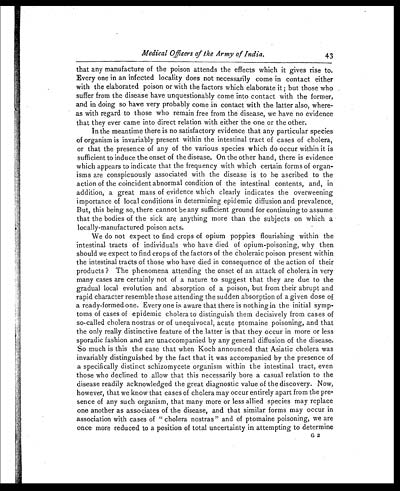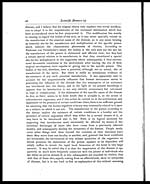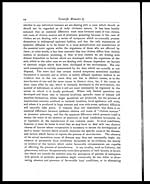Medicine - Institutions > Army health reports and medical documents > Scientific memoirs by medical officers of the Army of India > Part VIII, 1894 > 1 - Results of continued study of various forms of comma-bacilli occuring in Calcutta
(49) Page 43
Download files
Individual page:
Thumbnail gallery: Grid view | List view

Medical Officers of the Army of India.
43
that any manufacture of the poison attends the effects which it gives rise to.
Every one in an infected locality does not necessarily come in contact either
with the elaborated poison or with the factors which elaborate it but those who
suffer from the disease have unquestionably come into contact with the former,
and in doing so have very probably come in contact with the latter also, where-
as with regard to those who remain free from the disease, we have no evidence
that they ever came into direct relation with either the one or the other.
In the meantime there is no satisfactory evidence that any particular species
of organism is invariably present within the intestinal tract of cases of cholera,
or that the presence of any of the various species which do occur within it is
sufficient to induce the onset of the disease. On the other hand, there is evidence
which appears to indicate that the frequency with which certain forms of organ-
isms are conspicuously associated with the disease is to be ascribed to the
action of the coincident abnormal condition of the intestinal contents, and, in
addition, a great mass of evidence which clearly indicates the overweening
importance of local conditions in determining epidemic diffusion and prevalence.
But, this being so, there cannot be any sufficient ground for continuing to assume
that the bodies of the sick are anything more than the subjects on which a
locally-manufactured poison acts.
We do not expect to find crops of opium poppies flourishing within the
intestinal tracts of individuals who have died of opium-poisoning, why then
should we expect to find crops of the factors of the choleraic poison present within
the intestinal tracts of those who have died in consequence of the action of their
products ? The phenomena attending the onset of an attack of cholera in very
many cases are certainly not of a nature to suggest that they are due to the
gradual local evolution and absorption of a poison, but from their abrupt and
rapid character resemble those attending the sudden absorption of a given dose of
a ready-formed one. Every one is aware that there is nothing in the initial symp-
toms of cases of epidemic cholera to distinguish them decisively from cases of
so-called cholera nostras or of unequivocal, acute ptomaine poisoning, and that
the only really distinctive feature of the latter is that they occur in more or less
sporadic fashion and are unaccompanied by any general diffusion of the disease.
So much is this the case that when Koch announced that Asiatic cholera was
invariably distinguished by the fact that it was accompanied by the presence of
a specifically distinct schizomycete organism within the intestinal tract, even
those who declined to allow that this necessarily bore a casual relation to the
disease readily acknowledged the great diagnostic value of the discovery. Now,
however, that we know that cases of cholera may occur entirely apart from the pre-
sence of any such organism, that many more or less allied species may replace
one another as associates of the disease, and that similar forms may occur in
association with cases of " cholera nostras " and of ptomaine poisoning, we are
once more reduced to a position of total uncertainty in attempting to determine
G 2
Set display mode to: Large image | Zoom image | Transcription
Images and transcriptions on this page, including medium image downloads, may be used under the Creative Commons Attribution 4.0 International Licence unless otherwise stated. ![]()
| Permanent URL | https://digital.nls.uk/75002149 |
|---|
| Shelfmark | IP/QB.10 |
|---|---|
| Additional NLS resources: | |




